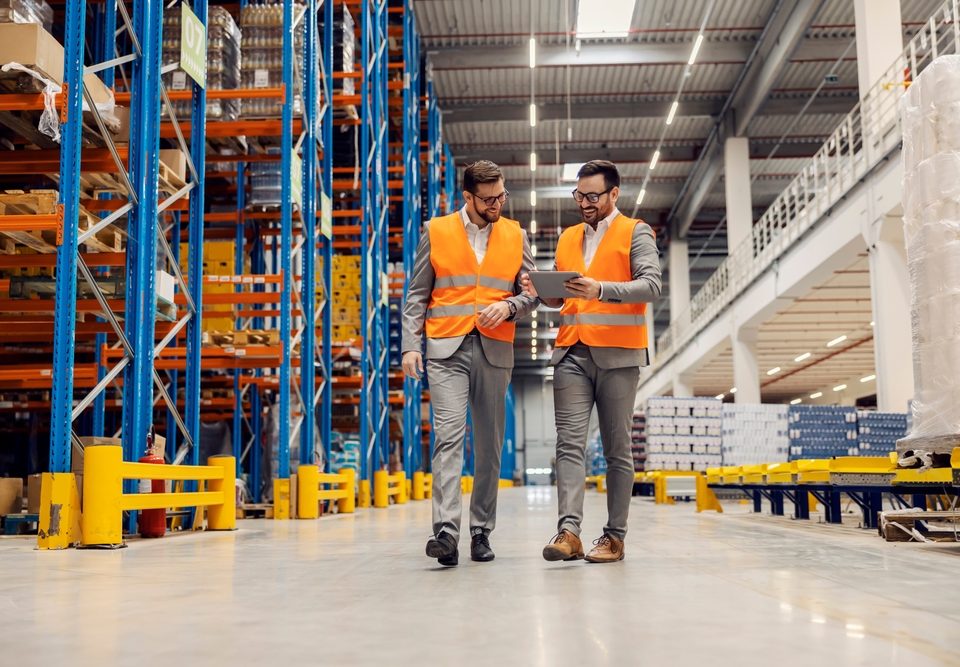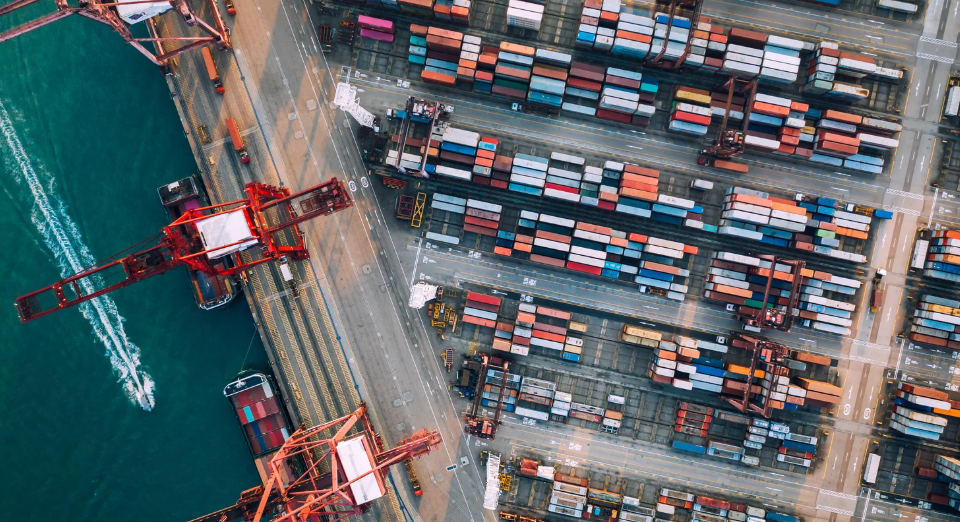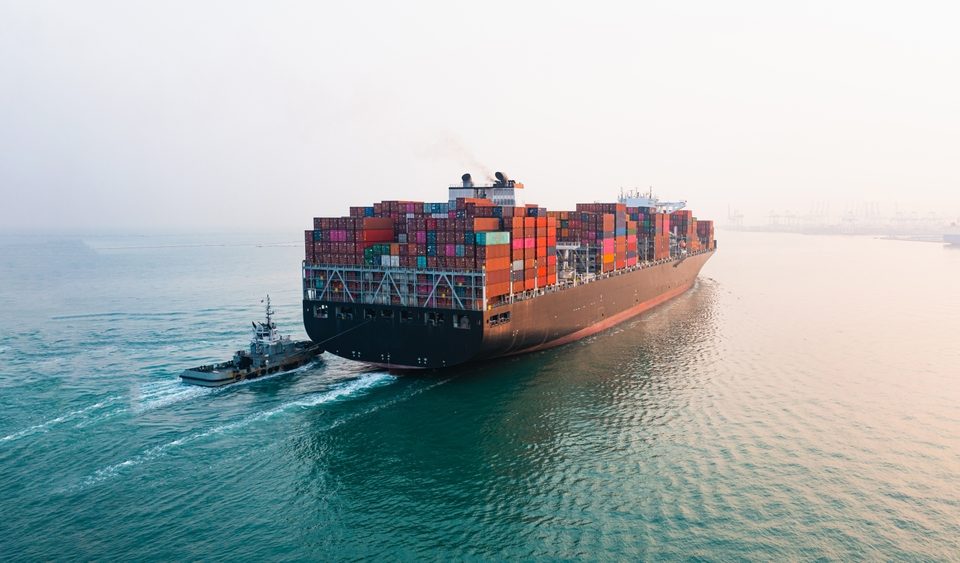
Port Congestion Update 1/7/22
January 10, 2022
Port Congestion Update 1/21/22
January 24, 2022Weekly Vessels Anchored and at Terminals as of 1/14/2022
LA & LB: Anchored 14 (NM)* | Terminal 30 | Loitering 81 (NM)**
Oakland: Anchored 10 | Terminal 9 | Drifting/Loitering 3
NWSA: Anchored 2 | Terminal 8 | Drifting (nil)
Vessel Congestion Update
On January 11, 2022, the Southern California Marine Exchange (SCME) reported 103 total ships in the twin ports of Los Angeles (LA) and Long Beach (LB). Of the vessels, 44 are container ships with 14 at anchor or loitering and 30 at berth. The average number of days vessels are waiting in anchorage for a berth is 17.6 to 29.7 days.
Note: Nautical Mile (NM) – *Within 40 NM & **Outside 150 NM
Loitering = Container vessels slow speed steaming and not at anchor
San Francisco Bay Area – Implements Safety and Air Quality Area 50 miles off the Northern California Coast
On January 10, 2022, the Pacific Maritime Shipping Association (PMSA) announced that the innovative process developed by the Pacific Maritime Association (PMA), PMSA, and SCME improved Safety and Air Quality and dramatically reduced vessel congestion in Southern California’s twin port complex of LA and LB. A similar new queuing system for container vessels, designed to enhance safety and air quality, has been expanded to the San Francisco (SF) Bay Area. As of January 10, 2021, container vessels will receive an assignment in the arrival queue based on their departure time from their last port of call and will wait outside in a new Safety and Air Quality Area 50 miles off the Northern California coast until their appointed arrival time to a berth. The previous system placed container vessels into the arrival queue based on when they crossed a line 80 nautical miles from the coast. The new process is anticipated to reduce emissions from vessels located near the SF Bay Area, and it allows for more space between vessels which is an important safety feature during winter storms. The new procedure will enable vessels to slow steam across the Pacific, thereby reducing overall emissions throughout their journey. On January 7, 2022, nine container vessels were anchored or awaiting a berth for Oakland, a figure that is expected to rise in early 2022. The change in process is not designed to reduce the overall number of vessels calling at the Port of Oakland. The new queue is monitored by the Marine Exchange of the San Francisco Bay Region.
LA/LB Import Container Dwell Fee – Extended by the Ports
The twin ports of LA and LB have, for the eighth time, delayed consideration of charging the “Container Dwell Fee” until January 21, 2022, and will reassess fee implementation after monitoring data over the next week. To date, the ports have seen a combined decline of 55% in aging cargo on the docks since the program was announced on October 25, 2021. Prior to the COVID pandemic, on average the port containers for local delivery remained on-dock terminals for under four days, while containers destined for trains dwelled on-dock less than two days. The policy to charge for the dwelling of nine days or more moved by truck and six days moving by rail was established as a temporary policy in coordination with the Biden-Harris Supply Chain Disruptions Taskforce, U.S. Department of Transportation, and multiply supply chain stakeholders to reduce import container on-dock dwell time.
U.S. Secretary of Transportation – Pete Buttigieg Visits San Pedro Bay Ports – LA and LB
On January 11, 2022, Secretary Buttigieg toured the twin ports. His visit came as America’s maritime ports are set to receive an infusion of critical infrastructure funding. It was announced that the port of LB would be awarded a $52 million grant for the build-out of pier B on-dock rail facility. Earlier in the day, John Porcari, Chair of the Biden-Harris Administration Congestion Task Force, provided a virtual presentation that indicated a statement in part, “awarded funding is slow to be delivered and work is needed to speed up the delivery process of awarded funds.” Buttigieg also stated in part, “In an effort to alleviate some of the environmental impacts of the backlog of ships waiting off the coast for their turn to dock, PMSA, PMA, and SCME implemented a new queuing system for vessels. The result has been a dramatic reduction of ships loitering within 40 miles off the coast from a record 86 on Nov 16, 2021, to 14 as of January 11, 2022. This does not mean the issue has been solved; it’s not just how many ships you see, it’s how many ships are on their way.” The backlog of ships remains at unprecedented levels, as a total of 103 vessels, two fewer than the record-setting 105 were reported on January 7, 2022, that are anchored farther out at sea or slow speed steaming toward the twin ports.
Buttigieg did not unveil any new initiatives and highlighted several funding opportunities aimed at improving the resilience of the nation’s supply chain, including a partnership with the State of California to fast tract $5 billion in financing for the State port-related infrastructure projects along with mentioning the $17 billion in funding for U.S. ports as part of the Biden administration’s infrastructure bill and more than $52 million in federal funding for the Port of LB Pier B On-Dock Support Rail Facility.
Please contact your Western Overseas representative with any questions.





